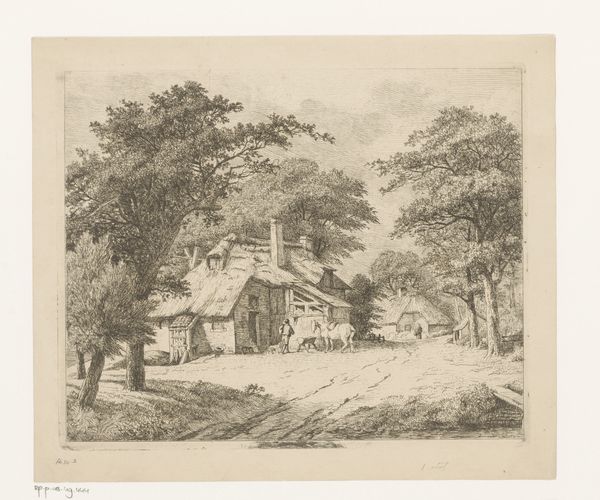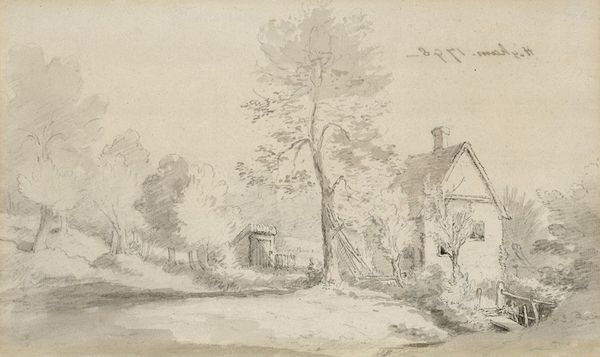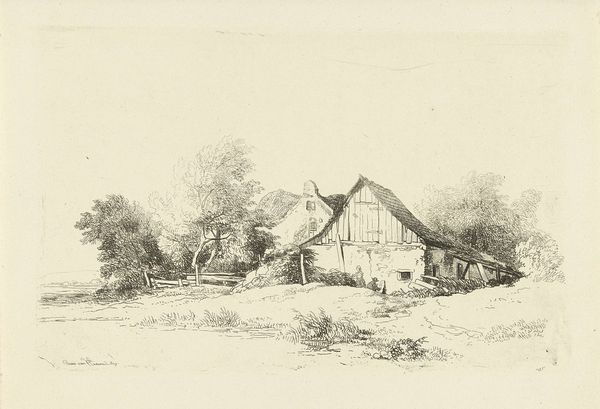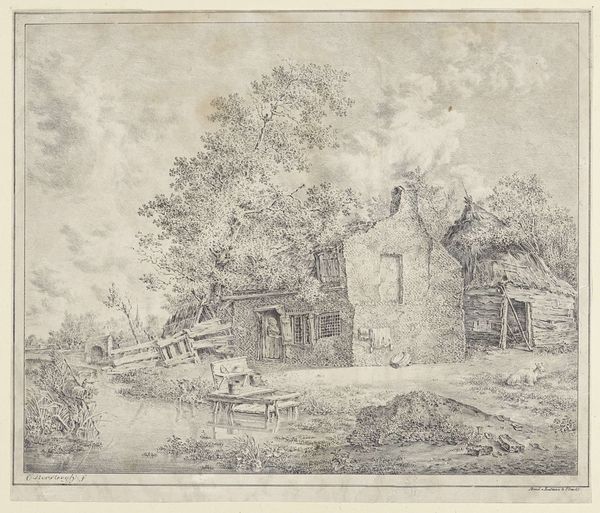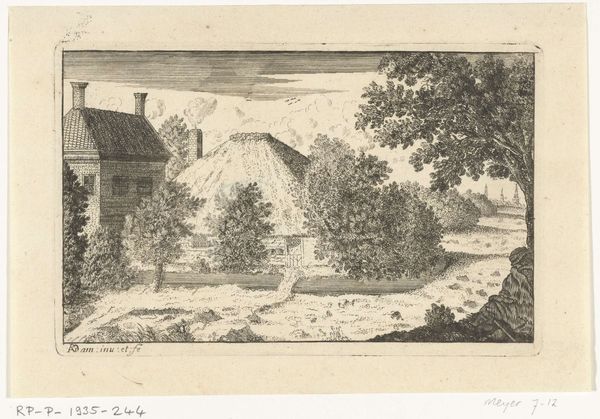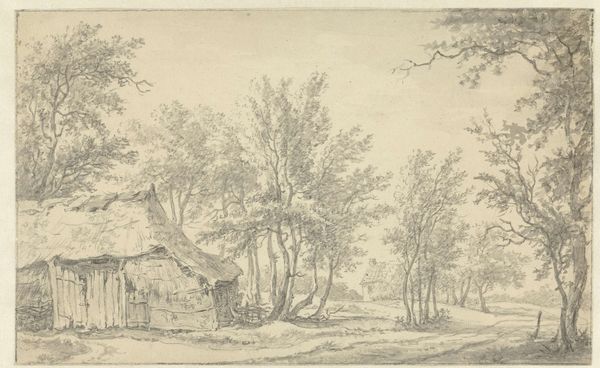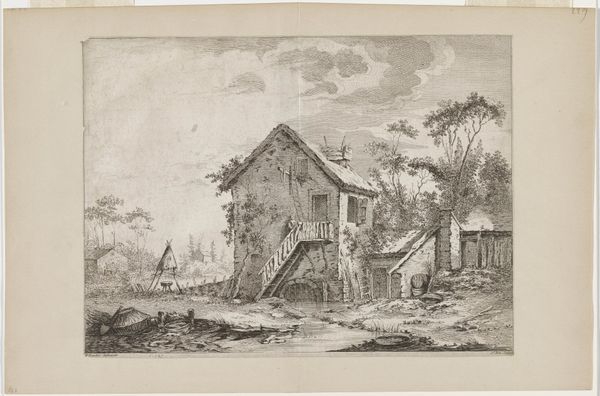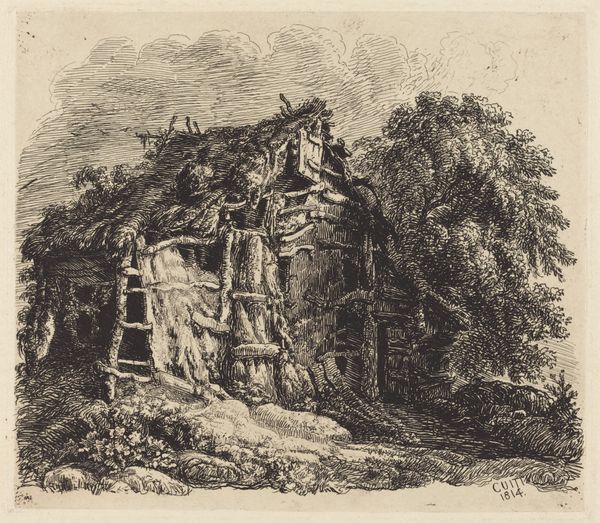
Dimensions: height 183 mm, width 272 mm
Copyright: Rijks Museum: Open Domain
Editor: This lovely watercolour and pencil piece is "Pannekoekenhuisje De Schaapskooi" by Paul Joseph Constantin Gabriël, created in 1845. I'm really drawn to the simplicity and the use of light. It almost feels like a snapshot. What do you make of it? Curator: Well, beyond its visual charm, this watercolor offers us a window into the changing role of landscape art in the 19th century Netherlands. Previously, idealized landscapes were largely commissioned by wealthy patrons to express ownership. But by 1845, we see a shift toward depicting everyday scenes. Editor: So it's about accessibility and perhaps a wider audience? Curator: Exactly. Think about the rise of the middle class and the burgeoning art market. Artists like Gabriël start capturing what they observe directly, offering a glimpse into the lives of ordinary people. Notice how the building seems nestled within the landscape rather than dominating it. What effect do you think that has on the viewer? Editor: It feels less grand, more relatable. Like I could actually visit this place. Curator: Precisely! It’s democratizing the subject matter. The pancake house itself, while quaint, also hints at a changing society where leisure and tourism were becoming more common, influencing both artistic representation and cultural values. Editor: That makes me appreciate the artwork so much more! It is interesting to consider how political motivations affect artwork. Curator: Indeed. Every stroke of the brush tells a story, not just of a place, but of the times in which it was created. I learned that popular landscape themes also carried nationalistic and political associations. It also underscores the value in critically assessing the institutions through which art reaches the public. Editor: I see that so well now. Thanks!
Comments
No comments
Be the first to comment and join the conversation on the ultimate creative platform.

